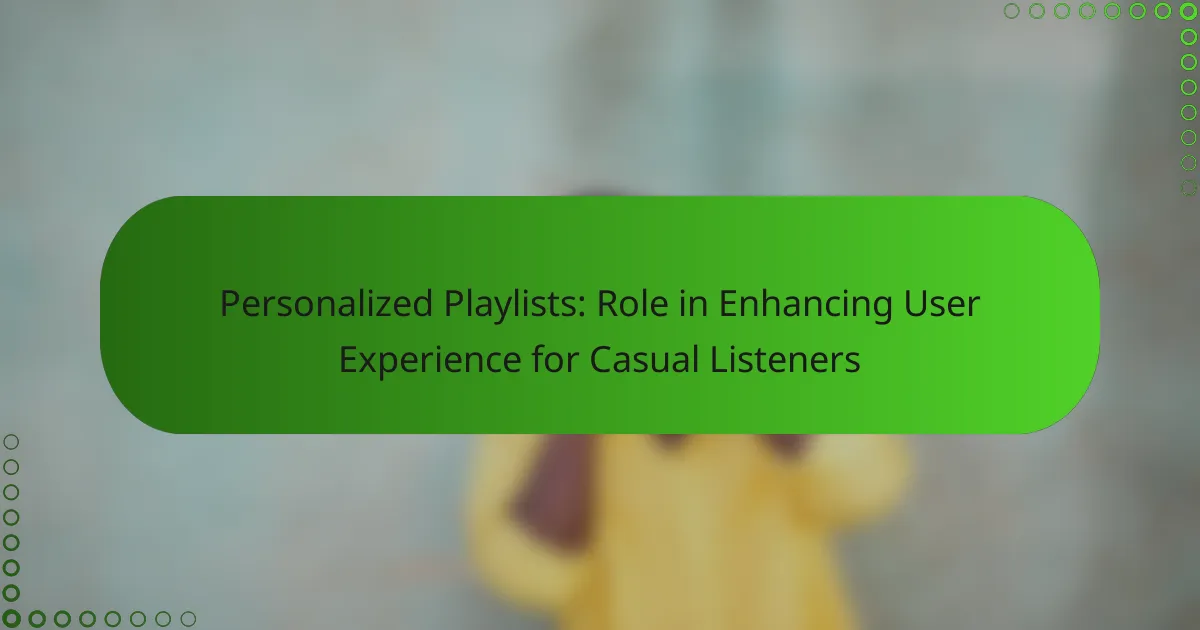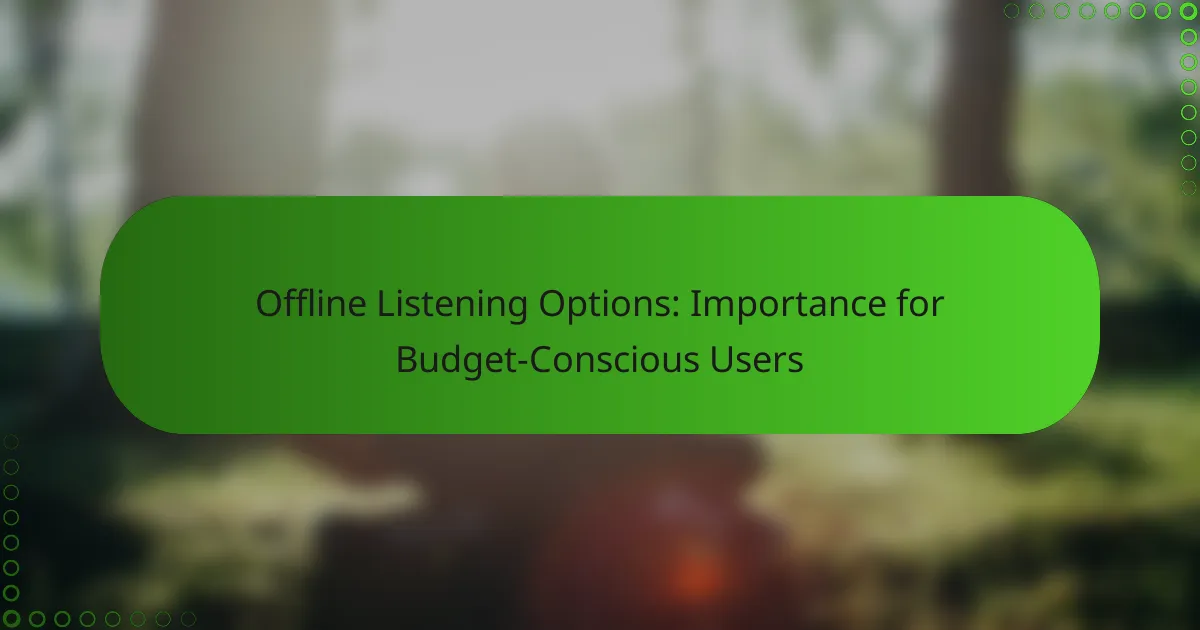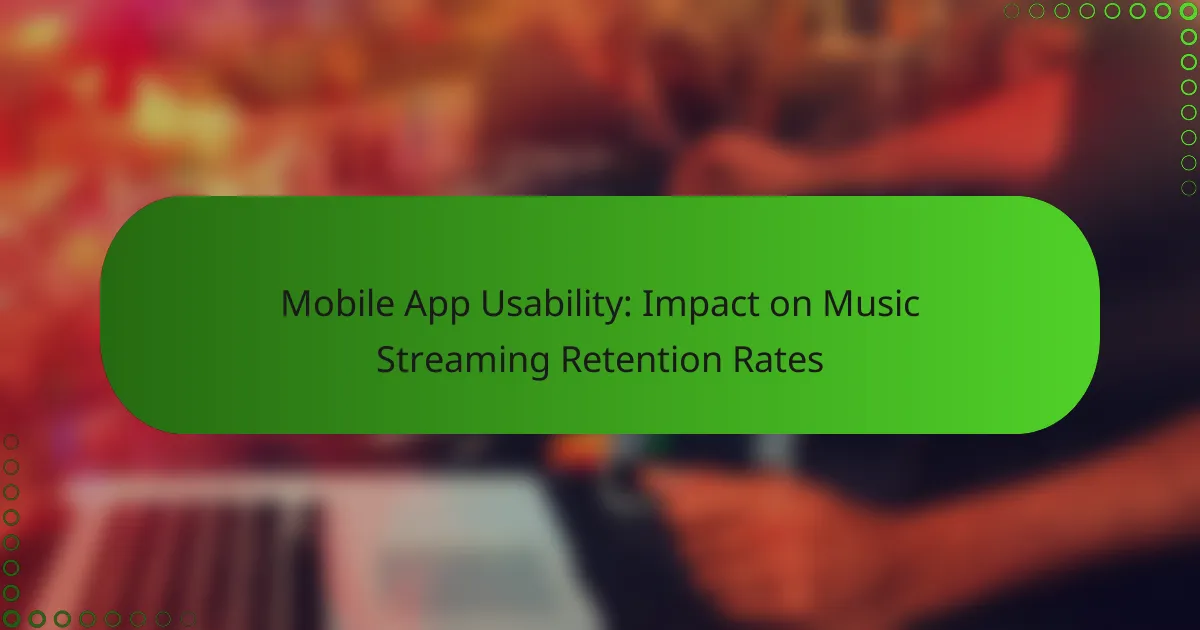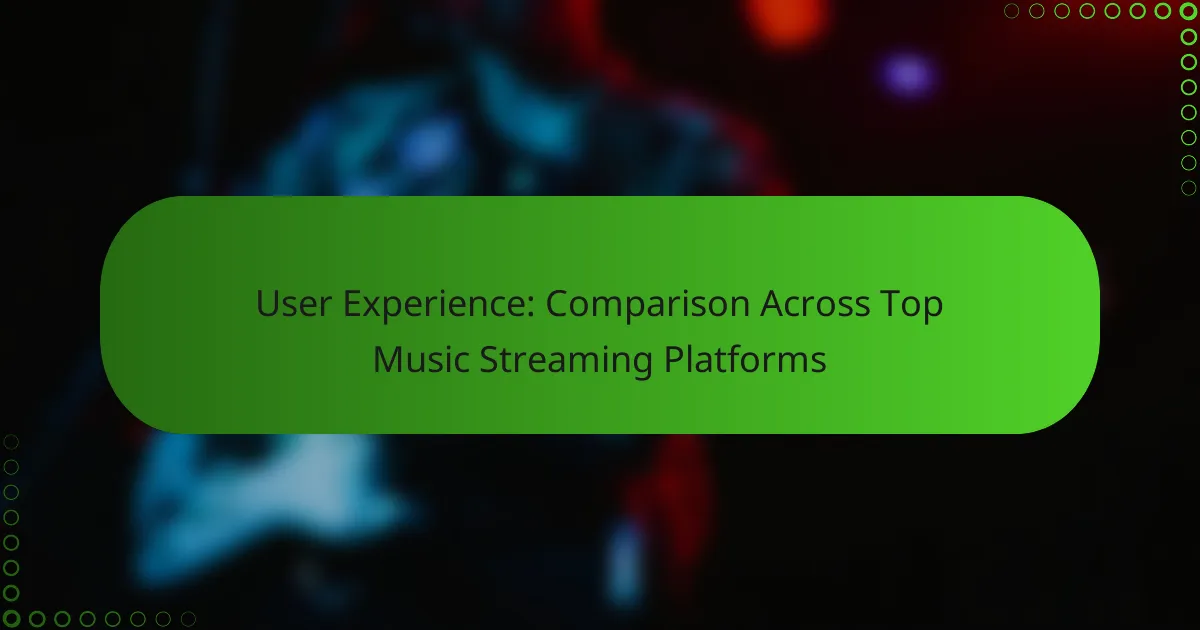Personalized playlists play a crucial role in enhancing the user experience for casual listeners by delivering music selections that align with their unique tastes and preferences. By leveraging algorithms to analyze listening habits, these playlists foster a stronger connection to the music and encourage users to engage more frequently with their favorite platforms.

How do personalized playlists enhance user experience for casual listeners?
Personalized playlists significantly enhance the user experience for casual listeners by providing tailored music selections that match individual tastes and preferences. This customization fosters a deeper connection to the music and encourages more frequent engagement with the platform.
Increased engagement through tailored content
Personalized playlists keep casual listeners engaged by curating music that resonates with their unique preferences. When users receive recommendations based on their listening habits, they are more likely to explore and enjoy the content, leading to longer listening sessions.
Platforms often utilize algorithms that analyze user behavior, such as skipped tracks and repeated songs, to refine these playlists. This data-driven approach ensures that the content remains relevant and appealing, which can boost user retention rates.
Improved music discovery and exploration
Personalized playlists facilitate music discovery by introducing casual listeners to new artists and genres they might not encounter otherwise. By blending familiar tracks with fresh selections, listeners can expand their musical horizons without feeling overwhelmed.
For example, a user who frequently listens to pop music may receive a playlist that includes indie or alternative tracks, enhancing their overall experience. This exposure can lead to a more diverse music library and a greater appreciation for different styles.
Enhanced emotional connection with music
Personalized playlists can strengthen the emotional connection listeners have with music by aligning selections with their moods and experiences. When playlists reflect personal moments or feelings, they create a more immersive listening experience.
For instance, a playlist designed for relaxation might include soft acoustic tracks, while one for a workout could feature high-energy songs. This emotional resonance encourages users to return to the platform, as they associate it with positive experiences and memories.

What are the best platforms for personalized playlists?
The best platforms for personalized playlists include Spotify, Apple Music, and YouTube Music, each offering unique features that cater to casual listeners. These services utilize algorithms to curate music selections based on user preferences, listening habits, and trends.
Spotify’s Discover Weekly
Spotify’s Discover Weekly is a personalized playlist that updates every Monday, featuring tracks tailored to individual listening tastes. It analyzes your music history and suggests songs you haven’t yet explored, making it an excellent way to discover new artists and genres.
To maximize your experience, listen to a variety of music to help the algorithm refine its recommendations. Avoid skipping tracks too frequently, as this can hinder the accuracy of future playlists.
Apple Music’s For You
Apple Music’s For You section offers personalized playlists and recommendations based on your listening habits and preferences. It includes curated playlists like “Favorites Mix” and “Chill Mix,” which refresh weekly to keep your music experience dynamic.
Engage with the platform by liking songs and albums to enhance the accuracy of your recommendations. Regularly exploring new music will also help the algorithm better understand your tastes.
YouTube Music’s personalized mixes
YouTube Music provides personalized mixes that adapt to your listening behavior, showcasing a blend of familiar tracks and new discoveries. These mixes are updated frequently, allowing for a fresh listening experience tailored to your preferences.
To improve the quality of your personalized mixes, interact with the platform by liking or disliking tracks. This feedback helps the algorithm fine-tune its suggestions, ensuring a more satisfying playlist experience over time.

How do algorithms create personalized playlists?
Algorithms create personalized playlists by analyzing user data to understand individual preferences and listening habits. This process involves collecting information on what users listen to, how often they listen, and their interactions with various songs and artists.
Data collection from user behavior
Data collection is the foundation of personalized playlists, as it involves tracking user interactions with music platforms. This includes metrics such as song skips, repeat plays, and playlist additions. By gathering this data, platforms can identify patterns in user preferences.
For example, if a user frequently listens to indie rock and skips pop songs, the algorithm will prioritize indie rock tracks in their playlists. This behavior-driven approach ensures that the playlists remain relevant and engaging for casual listeners.
Machine learning for preference prediction
Machine learning plays a crucial role in predicting user preferences by analyzing the collected data to identify trends and correlations. Algorithms can learn from past behavior to forecast what songs a user might enjoy in the future. This predictive capability enhances the user experience by delivering tailored content.
For instance, if a user has a history of enjoying upbeat tracks, the algorithm may suggest similar songs or artists that fit that mood. This continuous learning process helps maintain user engagement and satisfaction.
Collaborative filtering techniques
Collaborative filtering techniques enhance personalized playlists by leveraging the preferences of similar users. This method identifies users with comparable tastes and recommends songs that those users have enjoyed, even if the original user has not yet listened to them.
For example, if a user shares listening habits with a group that enjoys a specific artist, the algorithm may suggest songs from that artist or related genres. This approach not only diversifies the playlist but also introduces users to new music they are likely to appreciate.

What role do user preferences play in playlist personalization?
User preferences are crucial in playlist personalization as they help tailor music selections to individual tastes. By analyzing factors such as genre, mood, and favorite artists, streaming platforms can create playlists that resonate with casual listeners.
Influence of listening history
Listening history significantly impacts playlist personalization by providing insights into a user’s musical habits. Streaming services track songs played, skipped, and saved, allowing algorithms to identify patterns and preferences over time.
For instance, if a user frequently listens to upbeat pop tracks, the platform may prioritize similar songs in their personalized playlists. This history-based approach ensures that the playlists reflect current interests and evolving tastes.
Impact of user-generated playlists
User-generated playlists contribute to personalization by showcasing community-driven curation. When users create and share their playlists, they introduce unique combinations of songs that may not be captured by algorithms alone.
Platforms often analyze these playlists to identify trending tracks and emerging artists, which can then be incorporated into personalized recommendations. Engaging with user-generated content allows casual listeners to discover new music that aligns with their preferences while also enhancing the overall listening experience.
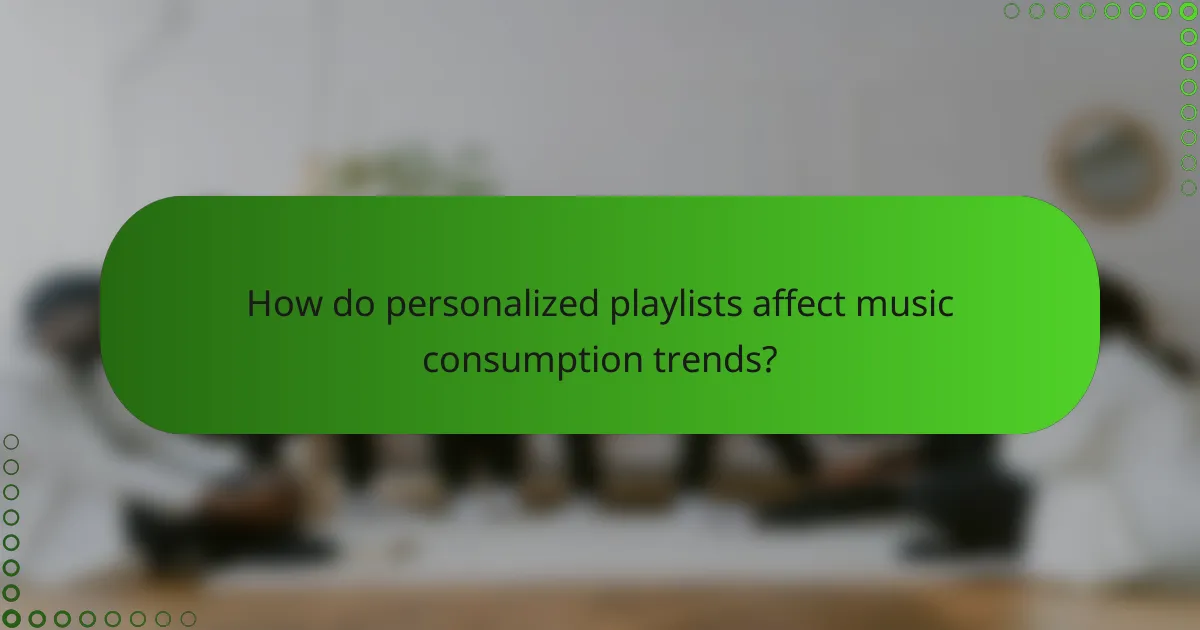
How do personalized playlists affect music consumption trends?
Personalized playlists significantly influence music consumption trends by tailoring content to individual preferences, leading to increased engagement and discovery. This customization not only enhances user satisfaction but also drives the overall growth of streaming platforms.
Shift towards on-demand listening
The rise of personalized playlists has accelerated the shift towards on-demand listening, where users can access music whenever they choose. This trend reflects a departure from traditional radio and album formats, allowing listeners to curate their own experiences.
With on-demand services, users can create playlists based on mood, activity, or even specific genres, resulting in a more engaging and relevant listening experience. For example, a user might have different playlists for workouts, relaxation, or social gatherings.
Increased reliance on streaming services
As personalized playlists become more prevalent, there is a growing reliance on streaming services for music consumption. Users are increasingly turning to platforms like Spotify, Apple Music, and YouTube Music, which offer algorithm-driven playlists that adapt to listening habits.
This reliance is evident in the decline of physical music sales and digital downloads, with streaming now accounting for a substantial portion of the music industry’s revenue. For casual listeners, the convenience and accessibility of streaming services make them the preferred choice for discovering new music and enjoying favorite tracks.

What are the challenges of creating effective personalized playlists?
Creating effective personalized playlists involves balancing user preferences with diversity in music selection while addressing privacy concerns related to data usage. These challenges can significantly impact user satisfaction and engagement.
Balancing diversity and user preferences
To create engaging playlists, it’s essential to balance the user’s known preferences with a variety of music styles. If playlists are too narrow, users may quickly lose interest; if they are too diverse, users might feel disconnected from the selections.
Using algorithms that analyze listening habits can help identify both favorite genres and less frequently explored styles. A good practice is to include a mix of familiar tracks and new recommendations, aiming for about 70% user favorites and 30% new discoveries.
Addressing privacy concerns with data usage
Privacy concerns are paramount when utilizing user data for personalized playlists. Users often worry about how their listening habits are tracked and used, which can lead to distrust in the service.
To mitigate these concerns, platforms should be transparent about data collection practices and provide users with control over their data. Offering options to opt-out of data tracking or to anonymize data can enhance user trust while still allowing for effective personalization.

What future trends are emerging in personalized playlists?
Future trends in personalized playlists are increasingly focused on advanced algorithms and user engagement strategies. These developments aim to create more tailored listening experiences that adapt to individual preferences and behaviors.
Integration of AI and Machine Learning
The use of artificial intelligence (AI) and machine learning is revolutionizing personalized playlists. These technologies analyze vast amounts of user data, including listening habits and preferences, to curate playlists that resonate with individual tastes. As algorithms improve, playlists will become more dynamic, adjusting in real-time based on user interactions.
For instance, platforms may incorporate feedback mechanisms where users can rate songs, allowing the AI to refine its recommendations. This creates a more engaging experience, as listeners receive content that feels uniquely suited to them.
Enhanced User Interaction
Future personalized playlists will likely emphasize user interaction, allowing listeners to have a say in the curation process. Features such as collaborative playlists, where multiple users can contribute songs, are becoming popular. This not only enhances the social aspect of music listening but also leads to a more diverse range of music being included.
Moreover, platforms may introduce gamification elements, rewarding users for engaging with playlists or discovering new music. This can increase user retention and satisfaction as listeners feel more involved in their music journey.
Focus on Mood and Context
Personalized playlists are expected to increasingly focus on mood and context, tailoring selections based on the listener’s current emotional state or activity. For example, playlists designed for workouts may feature high-energy tracks, while those for relaxation might include softer, calming music.
Apps may utilize sensors or user input to determine context, such as time of day or location, further enhancing the relevance of recommendations. This approach ensures that the music aligns not just with personal taste but also with the listener’s immediate needs.
Incorporation of User-Generated Content
User-generated content is set to play a significant role in the evolution of personalized playlists. Platforms may allow users to create and share their playlists, which can then be algorithmically analyzed to identify popular trends and themes. This not only enriches the music library but also fosters a sense of community among listeners.
By integrating user-generated playlists into recommendation systems, platforms can offer a more varied selection that reflects the collective preferences of their audience. This can lead to discovering new artists and genres that users may not have encountered otherwise.






